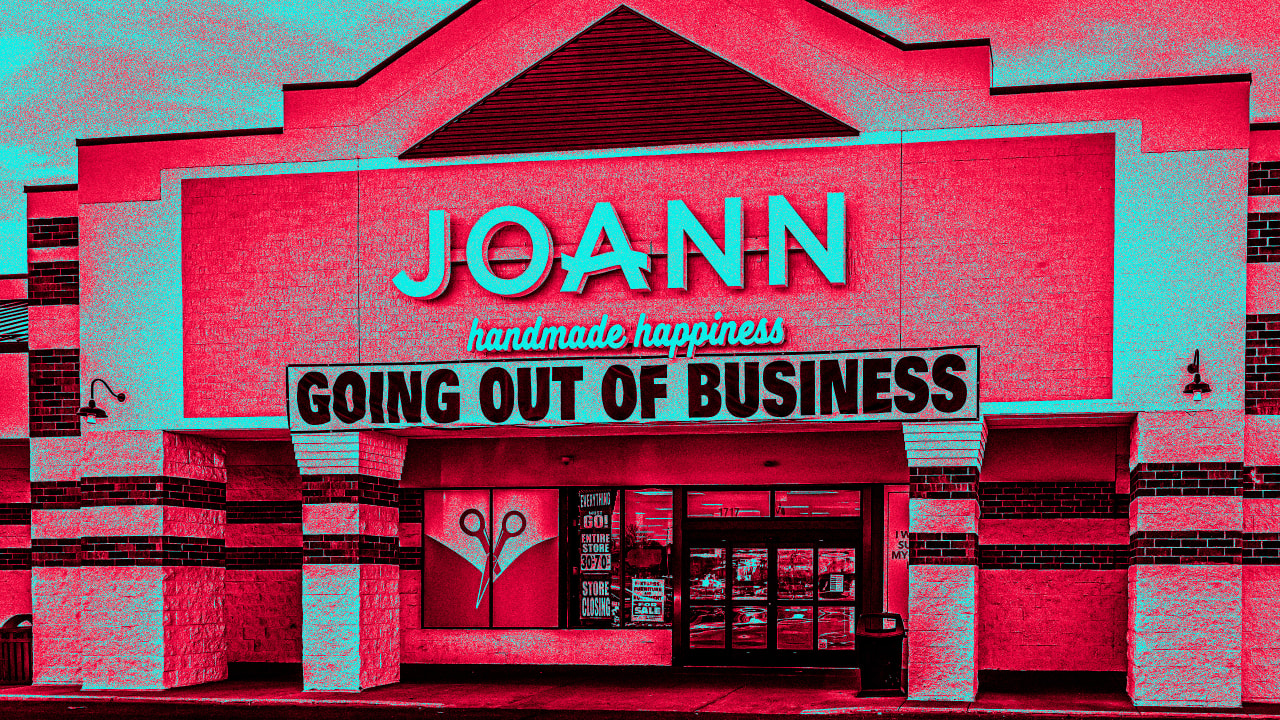Global Quinoa Flour Market Size, Share, and Trends Analysis Report
"Global Quinoa Flour Market Size, Share, and Trends Analysis Report—Industry Overview and Forecast to 2029
Executive Summary:
Data Bridge Market Research analyses that the Global Quinoa Flour Market which was USD 269.57 Billion in 2021 is expected to reach USD 407.47 Million by 2029 and is expected to undergo a CAGR of 5.30% during the forecast period of 2021 to 2029
Quinoa Flour Market Set for Significant Growth Amid Rising Industry Demand, New Research Reveals
New comprehensive research on the Quinoa Flour Market highlights promising growth prospects fueled by evolving consumer preferences and technological advancements. The latest market analysis projects a robust CAGR over the next five years, driven by increasing adoption across key sectors and expanding geographic reach. Market players are focusing on innovation and strategic partnerships to capitalize on emerging opportunities, positioning the Quinoa Flour Market as a critical component in the broader industry landscape.
The study further identifies key trends shaping the market dynamics, including the rise of sustainable solutions and digital transformation initiatives. Regional insights reveal strong growth potential in North America and Asia-Pacific, supported by favorable regulatory environments and infrastructure development. This in-depth report offers valuable data and actionable insights for stakeholders, enabling informed decision-making and strategic planning to navigate the competitive terrain of the Quinoa Flour Market.
Discover the latest trends, growth opportunities, and strategic insights in our comprehensive Quinoa Flour Market report.
Download Full Report: https://www.databridgemarketresearch.com/reports/global-quinoa-flour-market
Quinoa Flour Market Overview
**Segments**
- **Type:** The quinoa flour market can be segmented based on type into organic and conventional. The organic segment is expected to witness significant growth due to the rising consumer preference for organic products and the increasing awareness regarding the health benefits associated with organic quinoa flour.
- **Application:** On the basis of application, the market can be categorized into bakery products, snacks, breakfast cereals, beverages, and others. The bakery products segment holds a significant share in the market as quinoa flour is widely used in the production of gluten-free bakery items.
- **Distribution Channel:** In terms of distribution channel, the market is divided into supermarkets/hypermarkets, specialty stores, online retail, and others. The online retail segment is experiencing rapid growth attributed to the increasing penetration of e-commerce platforms and the convenience they offer to consumers in purchasing quinoa flour.
- **Region:** Geographically, the global quinoa flour market is segmented into North America, Europe, Asia Pacific, Latin America, and the Middle East & Africa. North America dominates the market due to the high adoption of gluten-free products and the growing demand for healthier food alternatives in the region.
**Market Players**
- **Quinola Mothergrain**
- **Andean Valley Corporation**
- **The British Quinoa Company**
- **Organic Farmers Co.**
- **NorQuin**
- **Ki’vi Organics**
- **Global Goods Inc.**
- **Archer Daniels Midland Company**
- **Now Health Group, Inc.**
- **Ancient Harvest (Part of Pereg Gourmet Group)**
These market players are actively involved in product launches, partnerships, acquisitions, and expansions to strengthen their market presence and expand their customer base in the global quinoa flour market.
For a comprehensive analysis of the Global Quinoa Flour Market, along with detailed insights and data, refer to https://www.databridgemarketresearch.com/reports/global-quinoa-flour-market .The global quinoa flour market is poised for steady growth in the coming years driven by several key factors. One of the primary growth drivers is the increasing consumer shift towards healthier and organic food options. As awareness regarding the health benefits of organic products continues to rise, the demand for organic quinoa flour is expected to witness significant growth. Market players such as Quinola Mothergrain, Andean Valley Corporation, and The British Quinoa Company are well-positioned to capitalize on this trend through their focus on organic offerings and product innovation.
Moreover, the application segment of the quinoa flour market offers a diverse range of opportunities for market players. The use of quinoa flour in bakery products, snacks, breakfast cereals, and beverages provides versatility and opens up multiple avenues for revenue generation. The bakery products segment, in particular, is expected to drive substantial demand for quinoa flour due to its gluten-free properties. This presents an opportunity for companies like Organic Farmers Co. and Ki’vi Organics to expand their product portfolios and cater to the growing demand for gluten-free alternatives in the food industry.
In terms of distribution channels, the online retail segment is emerging as a key avenue for market expansion. With the proliferation of e-commerce platforms and the increasing preference for online shopping, market players are leveraging online retail channels to enhance their reach and accessibility to consumers. Companies like Global Goods Inc. and Now Health Group, Inc. are actively tapping into the online retail trend to make quinoa flour more readily available to a wider customer base.
From a regional perspective, North America currently holds a dominant position in the global quinoa flour market. The region's strong adoption of gluten-free products, coupled with the growing demand for healthier food alternatives, has propelled the market growth in North America. As consumers in the region continue to prioritize health and wellness in their food choices, market players like Ancient Harvest (Part of Pereg Gourmet Group) and Archer Daniels Midland Company are well-positioned to capitalize on the opportunities presented by the North American market.
In conclusion, the global quinoa flour market is characterized by the increasing demand for organic and gluten-free products, diverse application opportunities, the emergence of online retail channels, and regional dominance in North America. Market players are actively engaging in strategic initiatives to strengthen their market presence and cater to the evolving needs of consumers. With continued focus on innovation and market expansion, the global quinoa flour market is set to witness sustained growth in the foreseeable future.**Segments**
Global Quinoa Flour Market, By Type (White, Black, Red), Category (Organic, Conventional), Distribution Channel (Store Based, Non Store Based) – Industry Trends and Forecast to 2029
- **Type:** The global quinoa flour market can be further segmented by type into white, black, and red quinoa flour varieties. Each type offers unique characteristics and flavors, catering to different consumer preferences and culinary applications. White quinoa flour is often favored for its mild taste and versatile nature, making it a popular choice in various recipes. Black quinoa flour, on the other hand, is known for its earthy flavor profile and distinctive color, adding a visually appealing element to dishes. Red quinoa flour is prized for its nutty taste and slightly chewy texture, making it a healthy and flavorful ingredient in a wide range of dishes.
- **Category:** Within the market segmentation based on category, the distinction between organic and conventional quinoa flour is significant. Organic quinoa flour is produced without the use of synthetic pesticides or fertilizers, making it a preferred choice for health-conscious consumers seeking natural and sustainable food options. In contrast, conventional quinoa flour may be processed using conventional farming methods that involve the application of chemical inputs. The organic segment is witnessing a surge in demand driven by the increasing consumer awareness regarding the environmental and health benefits of organic products.
- **Distribution Channel:** The distribution channel segmentation of the global quinoa flour market includes store-based and non-store-based channels. Store-based channels encompass supermarkets, hypermarkets, specialty stores, and other brick-and-mortar retail outlets where consumers can physically purchase quinoa flour. On the other hand, non-store-based channels refer to online retail platforms that enable customers to conveniently purchase quinoa flour from the comfort of their homes. The rise of e-commerce and online shopping trends has fueled the growth of non-store-based distribution channels, offering a convenient and accessible shopping experience for consumers.
**Market Players**
- Blue Lake Milling (Australia)
- Grain Millers, Inc. (U.S.)
- Morning Foods Ltd (U.K.)
- General Mills, Inc. (U.S.)
- Avena Foods Limited (Canada)
- RICHARDSON INTERNATIONAL LIMITED (Canada)
- CEREALTO SIRO FOODS (Spain)
- Premier Nutrition Company, LLC (Germany)
- Nestlé SA (Switzerland)
- Molino Spadoni spa (Italy)
- WEETABIX (U.K.)
- Valsemøllen (Denmark)
- Grillon D'Or (France)
- Clif Bar & Company (U.S.)
- Associated British Foods plc (U.K.)
- DANONE SA (Switzerland)
The global quinoa flour market is witnessing robust growth propelled by a combination of factors such as the increasing consumer preference for healthier food options, the demand for organic products, and the versatility of quinoa flour in different culinary applications. Market players in the quinoa flour industry are continuously innovating and expanding their product portfolios to meet the evolving needs of consumers and capitalize on emerging market trends.
The segmentation of the market by type into white, black, and red quinoa flour varieties offers a diverse range of choices for consumers, each with its unique flavor profiles and culinary uses. This variety appeals to a broad consumer base seeking flavorful and nutritious ingredients for their meals. Additionally, the distinction between organic and conventional quinoa flour categories caters to the growing demand for organic, sustainable, and environmentally friendly food products, driving the growth of the organic segment in the market.
In terms of distribution channels, both store-based and non-store-based channels play a crucial role in expanding the accessibility and availability of quinoa flour to consumers worldwide. The convenience and ease of online retail platforms have made it easier for consumers to purchase quinoa flour, contributing to the overall market growth. The strategic presence of market players in various distribution channels further enhances the reach and visibility of quinoa flour products in the global market.
Overall, the global quinoa flour market is characterized by a dynamic landscape shaped by consumer preferences, industry trends, and the strategic initiatives of market players. With a focus on innovation, sustainability, and meeting consumer demands, the quinoa flour market is poised for continued growth and expansion in the forecast period.
The Quinoa Flour Market is highly fragmented, featuring intense competition among both global and regional players striving for market share. To explore how global trends are shaping the future of the top 10 companies in the keyword market.
Learn More Now: https://www.databridgemarketresearch.com/reports/global-quinoa-flour-market/companies
Regional Outlook
North America:
The Quinoa Flour Market in North America is driven by advanced technological infrastructure, strong consumer demand, and supportive government policies. The United States holds the largest share due to early adoption and robust investment.
Europe:
Europe showcases steady growth in the Quinoa Flour Market, supported by strict regulatory frameworks, sustainability initiatives, and innovation-led economies. Key contributors include Germany, the U.K., and France.
Asia-Pacific:
Asia-Pacific is the fastest-growing region for the Quinoa Flour Market, fueled by population growth, urbanization, and industrial expansion. China, India, and Japan are major markets with high potential.
Latin America:
Growth in Latin America is moderate but rising, driven by expanding middle-class populations and increasing awareness of Quinoa Flour Market applications. Brazil and Mexico are the leading countries.
Middle East & Africa:
The Quinoa Flour Market in this region is gaining momentum due to infrastructural developments, diversification efforts, and rising investments. The UAE, Saudi Arabia, and South Africa are key players.
Competitive Landscape
Blue Lake Milling (Australia), Grain Millers, Inc. (U.S.), Morning Foods Ltd (U.K.), General Mills, Inc. (U.S.), Avena Foods Limited (Canada), RICHARDSON INTERNATIONAL LIMITED (Canada), CEREALTO SIRO FOODS (Spain), Premier Nutrition Company, LLC (Germany), Nestlé SA (Switzerland), Molino Spadoni spa (Italy), WEETABIX (U.K.), Valsemøllen (Denmark), Grillon D'Or (France), Clif Bar & Company (U.S.), Associated British Foods plc (U.K.), DANONE SA (Switzerland)
Future Trends— Global Quinoa Flour Market
Upcoming Technologies:
The Quinoa Flour Market will witness rapid adoption of cutting-edge technologies such as artificial intelligence, machine learning, the Internet of Things (IoT), blockchain, and automation. These technologies are expected to enhance operational efficiency, enable real-time data-driven decisions, and introduce innovative products and services.
Consumer Behavior Changes:
The Quinoa Flour Market will be shaped by changes in consumer preferences toward offerings that are experience-driven, convenient, and personalized. Increasing demand for transparency, digital engagement, and value-driven purchases will push companies to innovate their marketing and product strategies.
Sustainability Trends:
Sustainability will be a critical focus, with consumers and regulators alike driving demand for eco-friendly materials, energy-efficient processes, and circular economy initiatives. Businesses are anticipated to prioritize green innovations to reduce carbon footprints and meet stricter environmental regulations.
Expected Innovations:
The market is expected to see significant innovations, including smart products, integration of advanced analytics for predictive insights, and development of new materials or solutions tailored to emerging needs. Collaboration between technology firms and industry leaders will accelerate these innovations.
Why This Report is Valuable
This report provides in-depth industry insights that help stakeholders understand the current market landscape, key drivers, challenges, and growth opportunities within the Quinoa Flour Market. It offers regional and segment-wise forecasts that enable precise market planning and targeted investment strategies tailored to specific geographic areas and product/service segments.
The report includes comprehensive competitor benchmarking, allowing businesses to evaluate their position relative to key players, understand competitive strategies, and identify gaps or opportunities for differentiation. Additionally, it delivers actionable strategic recommendations based on market trends and data analysis to support informed decision-making, optimize business growth, and enhance market presence.
Top 15 FAQs About the Global Quinoa Flour Market Research Report
- What key segments are analyzed in the Quinoa Flour Market report?
- Which regions show the highest growth potential in the Quinoa Flour Market ?
- What time frame does the Quinoa Flour Market report cover for forecasts?
- What are the major drivers influencing the growth of the Quinoa Flour Market?
- Who are the leading competitors in the Quinoa Flour Market?
- How is market size estimated for the Quinoa Flour Market?
- What research methodologies are used to compile the Quinoa Flour Market report?
- Does the report discuss regulatory impacts on the Quinoa Flour Market?
- Are emerging technologies covered in the Quinoa Flour Market analysis?
- How does consumer behavior affect the Quinoa Flour Market trends?
- What sustainability trends are impacting the Quinoa Flour Market?
- Does the report include a SWOT analysis of key players in the Quinoa Flour Market?
- How frequently is the Quinoa Flour Market report updated?
- Can the Quinoa Flour Market report be customized for specific business needs?
- What are the future opportunities and challenges identified in the Quinoa Flour Market?
Browse More Reports:
https://www.databridgemarketresearch.com/de/reports/global-high-barrier-packaging-films-for-pharmaceuticals-market
https://www.databridgemarketresearch.com/pt/reports/europe-parasitology-identification-market
https://www.databridgemarketresearch.com/es/reports/global-notoginseng-root-extract-market
https://www.databridgemarketresearch.com/jp/reports/middle-east-and-africa-passive-fire-protection-coating-market
https://www.databridgemarketresearch.com/ru/reports/asia-pacific-orthopedic-soft-tissue-repair-market
About Data Bridge Market Research:
An absolute way to forecast what the future holds is to comprehend the trend today!
Data Bridge Market Research set forth itself as an unconventional and neoteric market research and consulting firm with an unparalleled level of resilience and integrated approaches. We are determined to unearth the best market opportunities and foster efficient information for your business to thrive in the market. Data Bridge endeavors to provide appropriate solutions to the complex business challenges and initiates an effortless decision-making process. Data Bridge is an aftermath of sheer wisdom and experience which was formulated and framed in the year 2015 in Pune.
Contact Us:
Data Bridge Market Research
US: +1 614 591 3140
UK: +44 845 154 9652
APAC : +653 1251 975
Email:- corporatesales@databridgemarketresearch.com
Tag
Quinoa Flour Market Size, Quinoa Flour Market Share, Quinoa Flour Market Trend, Quinoa Flour Market Analysis, Quinoa Flour Market Report, Quinoa Flour Market Growth, Latest Developments in Quinoa Flour Market, Quinoa Flour Market Industry Analysis, Quinoa Flour Market Key Player, Quinoa Flour Market Demand Analysis"






























































































































































